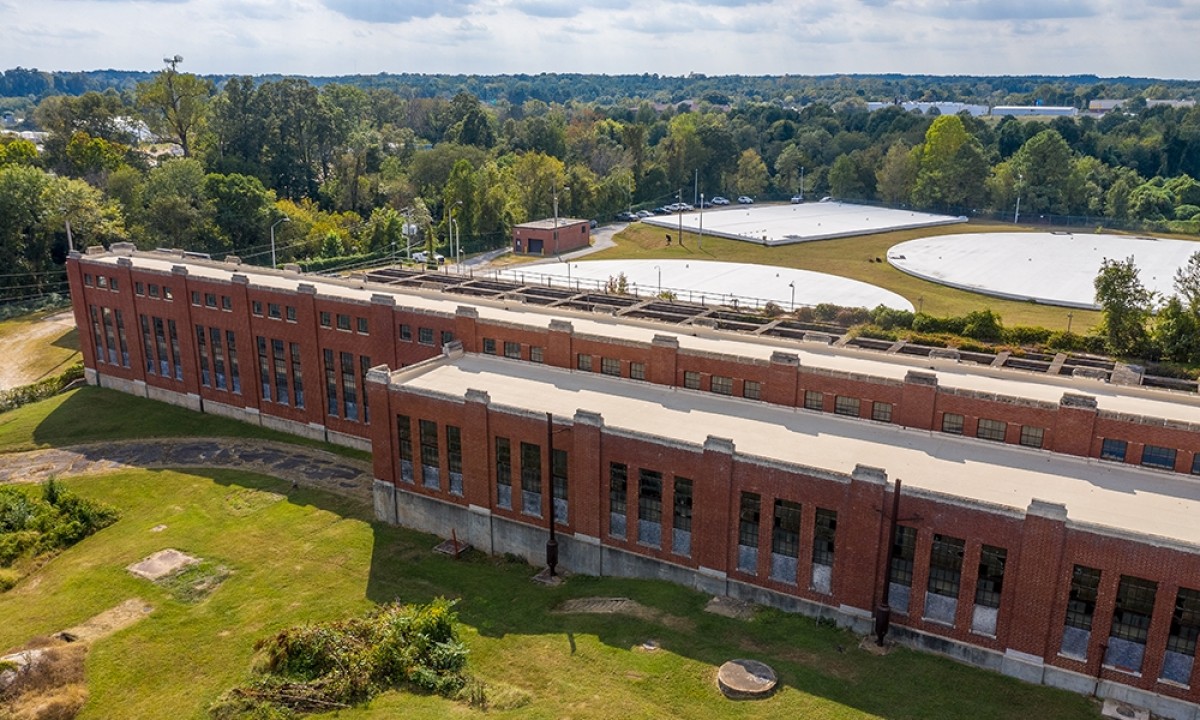On an especially hot day in May 1938, demand for water in Raleigh exceeded the system’s capacity of five million gallons per day. City officials were presented with choices then that remain familiar to local leaders today: wait until the issue becomes a regular occurrence, find a way to reduce demand, improve an existing plant, or build a new one.
To meet needs and sustain growth, Raleigh decided to construct a new facility to expand its capacity to provide clean water. They applied for and received a Public Works Administration grant to cover about half of the project’s $700,000 cost. When it went into active service in 1940, the E.B. Bain water treatment plant was able to filter and pump nearly 10 million gallons a day and was designed for potential expansion that would double that volume.
Present-day owner Empire Properties describes the plant’s “immense” cultural and architectural significance as a “functionally utilitarian building soaring with Art Moderne and Art Deco design, rhythmically deployed across 40,000 square feet.” The description elaborates:
Entering the head house, one is greeted with a spacious two-story open area with a monumental stair and open mezzanine featuring cast-iron railings and oak handrails. Original details — light fixtures, crown molding, scored plaster walls, glazed tile wainscoting — are intact and imbue the space with significant historic character. The spectacular operating wing extends on a platform from the head house. Arcades on each side of the platform overlook pump rooms and filter galleries on each side. This wing also possesses its original finishes, all of which are highlighted by abundant natural light provided by clerestory windows on both sides.
L.E. Wooten, founder of the firm that bears his name, was a resident engineer who supervised construction of the facility. It was built on the site of an earlier plant, adjacent to Walnut Creek on Fayetteville Street in South Raleigh. Bain was the sole source of treated water for Raleigh and its suburbs until 1967. It served in tandem with the E.M. Johnson plant until 1987.
With a population of just 69,000 at midcentury, Raleigh would become a city of more than half a million residents by the end of the millennium. Today the Oak City has eclipsed Charlotte as the largest metro in the state, with more than 1 million people living in Wake County – and counting.
Today there are two active Raleigh-owned and operated water treatment plants (not to be confused with the city’s three wastewater treatment plants). E.M. Johnson alone treats on average 41 million gallons a day and has a maximum capacity to treat 86 million gallons per day. The Dempsey E. Benton plant can treat up to 20 million gallons in 24 hours.
Fortunately the E.B. Bain plant is designated as a Raleigh Historic Landmark, and may one day be repurposed and revitalized. With some imagination, it could be transformed into a place for people to live, work, or otherwise enjoy life in the City of Oaks. One thing is for sure: it’ll take plenty of water each day to make it thrive.


